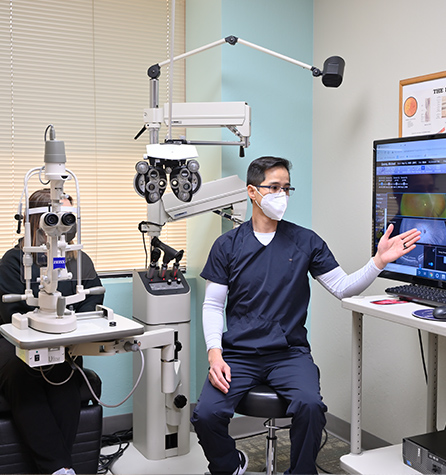What Is Glaucoma?
Glaucoma slowly damages your optic nerve. Increased intraocular pressure (IOP) is generally the cause of this damage, but glaucoma can still develop even if you have normal IOP levels.
There are several types of glaucoma.
Open-Angle Glaucoma
Open-angle glaucoma is the most common form of the disease and can cause damage to your optic nerve before you start to notice symptoms. This disease can start developing when you either have too much fluid (aqueous humor) in the anterior part of your eye or if not enough fluid is draining.
Too much fluid in your eye can increase your IOP levels, damaging your optic nerve and possibly leading to vision loss. Our doctors can diagnose glaucoma by measuring your IOP levels with a tonometer or observing your optic nerve during a comprehensive eye exam.
Closed-Angle Glaucoma
Closed-angle, or angle-closure, glaucoma is a type of the disease that can occur very rapidly, causing pain, headaches, nausea, and vision loss.
This type of glaucoma occurs when the drainage angle between your iris and cornea closes, preventing any fluids from draining properly. This can result in rapidly rising IOP levels and vision loss. Closed-angle glaucoma is considered to be a medical emergency that requires immediate attention.
Normal-Tension Glaucoma
Normal-tension glaucoma can develop without elevated IOP levels but still causes damage to your optic nerve over time. Even though doctors aren’t sure how normal-tension glaucoma develops, we can still diagnose the disease by observing your optic nerve during an eye exam.
Congenital Glaucoma
Congenital glaucoma is a version of the disease that could occur in children and infants. It can occur when the drainage canals don’t develop properly, leading to increased IOP levels. Congenital glaucoma is relatively rare but can develop in children if there is a family history.










